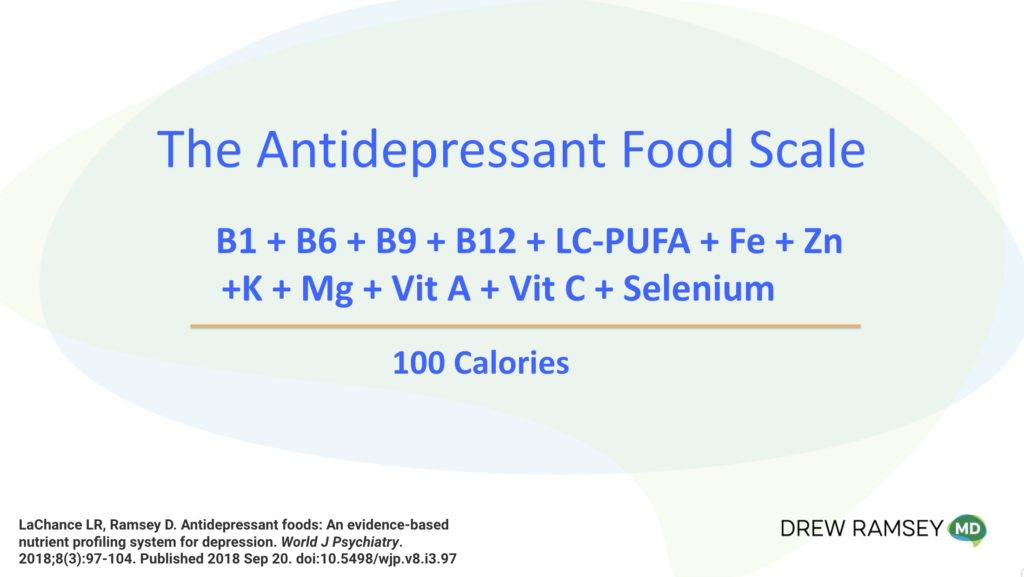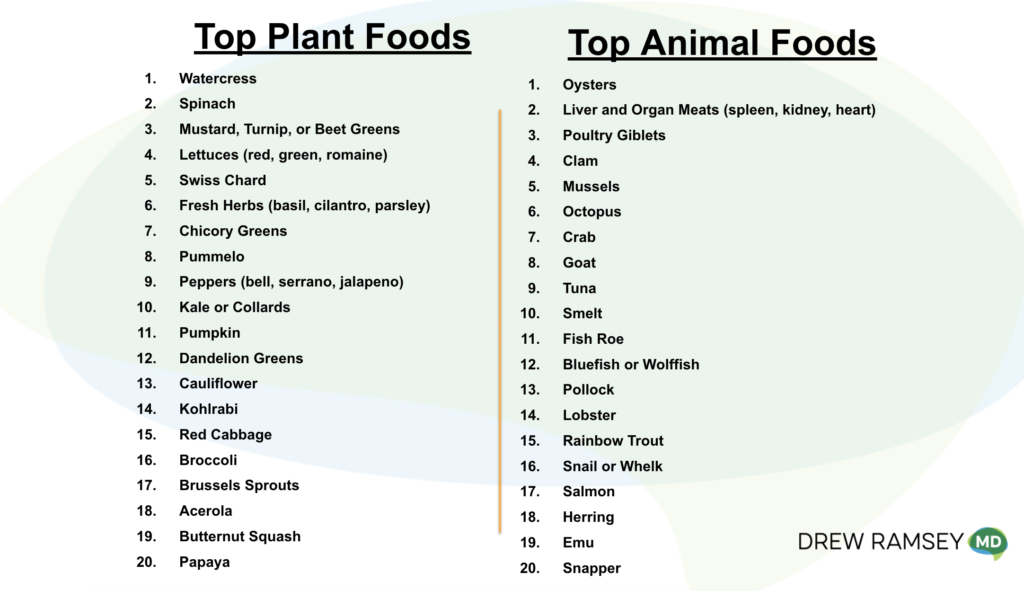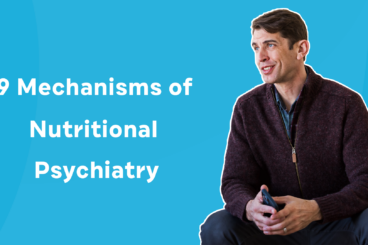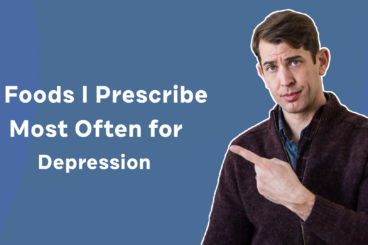Table of Contents
I want talk about how we figured out what the best foods for depression are and to walk you through a little bit of nutritional psychiatry history. Back in 2013 and 2014 I presented with colleagues for the first time about nutritional psychiatry at the American Psychiatric Association conference. I met a young psychiatrist, Laura LaChance and we started asking ourselves, how do we find out what the best foods are for mental health? What are the best foods for depression? There was a lot of data to sift through, and that’s exactly what we did.
The nutrients
We thought we’d start with this question of what nutrients really make a difference when it comes to mental health. There are a few nutrients that came to mind such as B12, long chain Omega-3 fats, vitamin B9, but we wanted to know if we look at all of the scientific literature, what are the nutrients that make the biggest difference for depression? So we looked through all the literature about essential vitamins and minerals, and we found that there were 12 of them. This was a part of the antidepressant foods paper that we published in the World Journal of Psychiatry and it was the first nutrient profiling system. A nutrient profiling system is when you look at food based on a lens of certain nutrients. Our question was what are the most nutrient dense foods that we could prescribe to patients or advise clinicians to prescribe to patients that would potentially prevent and treat depression. So these nutrients had data that they could do both. For example, if you have a population that doesn’t eat a lot of zinc, the odds that people in that population are going to get depression is much greater and if you add on zinc or some of these other nutrients to a treatment for depression, people do a little better. So that’s how we picked these nutrients and there are 12 of them.
The equation
This was the equation that we ended up with for the antidepressant food scale.

Vitamin B1, which is thiamine, vitamin B6 pyridoxine, vitamin B9, also known as folate which a lot of people know from prenatal vitamins as folic acid. Folate comes in lots of foods like asparagus and lentils. There’s vitamin B12, which is one of these nutrients that you really only find in animal products or in supplements, if you’re a vegan or vegetarian. There is long chain, polyunsaturated, fatty acid, and we looked at DHA and EPA. Those are the two longest chained, essential omega-3 fatty acids. They start in algae then they get bio concentrated. Most of us get them mainly in seafood and vegan and vegetarian patients get those in an algae supplement.
Those are really interesting and important for brain health. Iron and zinc are really important minerals. Potassium, also made the list which is surprising to a lot of people and that’s one of the reasons I’m always talking about white beans. Magnesium made the list, which is everybody’s favorite mineral and we associate it with calming. We advise people to take it at night sometimes to help them sleep. Vitamin A is listed with a little caveat there. We couldn’t fit phytonutrients into this even though Dr. LaChance and I tried. We wanted to have phytonutrients and fiber here because we think those are so important. Vitamin A is here and you kind of wonder whether carotenoids, which we turn into vitamin A might also be on this list. Vitamin C made the list, which again is surprising to people and also people are surprised to know how little vitamin C you need a day. It’s under 100 milligrams. What was shocking to me was seeing how many people in some populations don’t even get enough Vitamin C in their diet. Selenium’s listed and it is really essential to thyroid functioning.
A lot of nutritional profiling systems then want to throw in saturated fat, salt and sugar and we didn’t want to do that. We only wanted to look at natural whole foods and we only looked at calories. So this is a real true scale of nutrient density. Our hope was this would really answer the question for us based on the research that led us to these 12 nutrients. We wanted to create a list of foods that have the most of these nutrients per calorie.
The foods
This was the list of the 40 foods we came up with.

These are the top plant foods and the top animal foods that have the most nutrient density in terms of these 12 antidepressant nutrients. It’s important to note that this doesn’t mean everyone needs to start eating water cress and oysters all the time, and then you’re never going to get depression. It also doesn’t mean if you have depression, you’ll get better. I hope no one thinks nutritional psychiatry works just like that. Our hope though and what we learned from this nutrient profiling system was to cluster foods into food categories. You see all the leafy greens in the top plant foods list, and so many bivalves are in the top five of the animal foods.
We also noted there were a lot of our favorite brain foods, whether it was blueberries or black beans, that weren’t on the list and that was okay. This is a place to start. This was our effort to begin the conversation and continue the conversation asking what foods are the best for our mental health? What foods should we suggest in mental health settings and for all of us as eaters, what are the foods that we can think about incorporating into our diet, to feed ourselves and our families that are best for our brain health. I hope this helps you understand a little bit about where these foods come from and why, based on the most recent science, these are the top 40 foods for your brain health and your mental health.




I agree with you 100%
This is a really great list, so helpful. Thank you